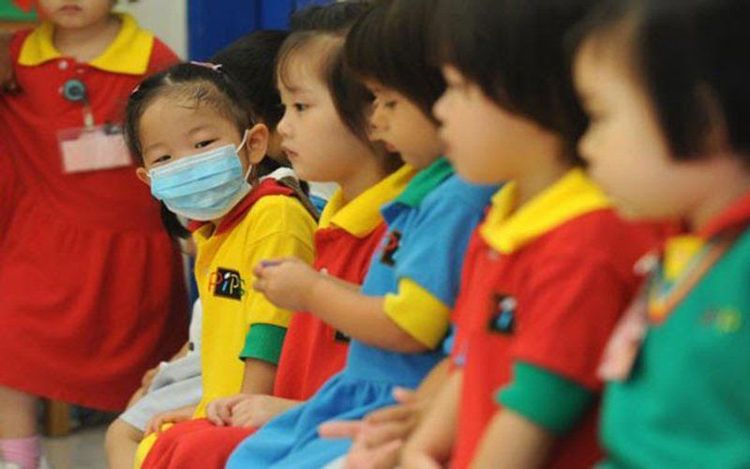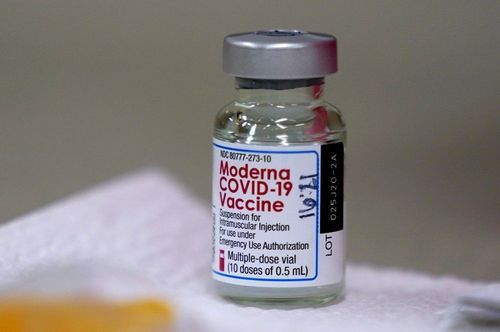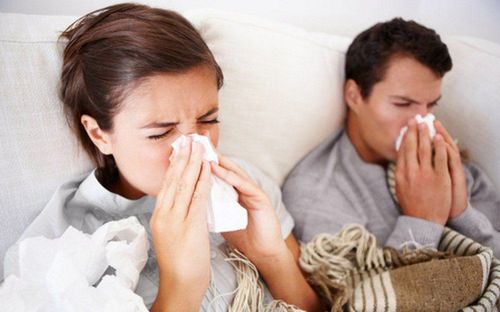This is an automatically translated article.
Influenza in children is caused by the influenza virus, which is usually benign, but can also progress and cause some dangerous complications such as ear infections, sinusitis, pharyngitis, conjunctivitis, pneumonia. .
1. Influenza transmission routes in children
Influenza is caused by an influenza virus that causes an upper respiratory infection. The disease usually appears in winter-spring and occurs every year, influenza virus strains also change each year. Children are susceptible to the flu, and when they do get sick, they usually have it longer than adults. Here are the ways the flu is transmitted in children:
Direct person-to-person transmission: Children come into direct contact with someone who has the flu, through communication, talking, shaking hands, hugging, or when someone has the flu. cough, sneeze will transmit the virus directly to the child through droplets. Indirect transmission through the surface of objects: When a person with the flu coughs or sneezes, it will spread the virus on the surface of the object. If children touch objects containing the virus with their hands and touch their eyes, nose, and mouth with their hands, they will be infected with the virus. Indirectly spread through daily living environment: Public environment or kindergarten, school with many other children with flu, when coughing, sneezing, ... will spread into the air droplets, epidemic containing virus . Influenza in children is usually benign, but the disease can also progress and cause some dangerous complications such as ear infections, sinusitis, pharyngitis, conjunctivitis, pneumonia. In particular, children under 5 years old, whose immune system is still weak, if they have an acquired disease or poor resistance, if they get the flu, it can lead to complications.

Trẻ em có thể bị lây cúm gián tiếp qua môi trường sống hàng ngày
2. What are the symptoms of a child with the flu?
Flu symptoms in children are often mistaken for a common cold, but flu symptoms are often more severe. After 1-2 infections, children infected with influenza virus and sick will show the following symptoms:
Fever (>38 degrees Celsius). Nasal congestion, runny nose (the discharge in the nose may be colorless, or be yellow or green). Sore throat, cough. Headaches, fatigue, aches and pains make children uncomfortable, or fussy, difficult to sleep. Anorexia, vomiting, possibly diarrhea. It is important to distinguish between flu symptoms in children and colds:
Influenza is caused by a virus that causes high fever, headache, body aches and other respiratory symptoms. Colds caused by the weather mainly cause coughs, not high fevers. Most flu symptoms, such as fever, will subside and go away after 5-7 days, however, children may still have a persistent cough and fatigue. After 10-14 days, all symptoms usually disappear completely.
3. How do children get the flu?
3.1 When a child has the flu, should he take him to the doctor?
If the child has flu with the following symptoms, parents need to take the child to another doctor:
High fever (above 38.5oC) and continuously (over 3 days), the child is given fever-reducing medicine but does not reduce the fever. Children refuse to eat, drink for many days, or vomit. Nasal congestion persists (more than 14 days) or does not improve. Shortness of breath, rapid breathing. Lethargy, irritation, convulsions Ear pain, pus in the ear. Eye pain, red eyes, yellow rust. 3.2 Treatment of influenza in children
Treatment of influenza in children is different from treatment of influenza in adults. Treatment methods vary depending on the condition and severity of the disease. If the disease has mild symptoms, the child can be monitored, treated and cared for at home, in which symptoms are mainly treated:
Use fever-reducing medicine if the fever is over 38.5 degrees Celsius, take 4 - 6 hours/time. Balance water and electrolytes for the body due to high fever causing dehydration. With severe cases or with severe complications or risk factors, children need to be hospitalized for monitoring, diagnosis and identification of the cause of the disease and combination of active resuscitation treatment. Antibiotics or antiviral drugs may be prescribed to treat bacterial superinfections.
3.3 Caring for a child with the flu
Dress the child in loose, well-ventilated clothing and apply a warm compress when the child has a high fever. Use physiological saline to clean the eyes, nose and mouth of the child according to the instructions of the doctor. Enhance the addition of nutritious, easy-to-digest and easy-to-swallow foods for children. Feed the child several times a day, divided into small meals to ensure the child's nutrition.

Bổ sung thực phẩm giàu dinh dưỡng để tăng sức đề kháng cho trẻ
4. Preventing flu in children
To prevent children from getting the flu, parents and caregivers need to pay attention to:
Maintain personal hygiene by washing hands often, taking a shower. Wash hands before eating. When coughing, sneezing or having a runny nose, cover it with a tissue and throw it away, and wash your hands after sneezing or coughing. Keep your surroundings clean and your house clean and ventilated by regularly cleaning. During flu season, you should limit going to crowded places or avoid contact with infectious sources. Get a flu shot every year. Children are very susceptible to influenza, especially children under 5 years old because their immune systems are not yet mature. Children with mild flu can be monitored, treated, and cared for at home. With severe cases, parents need to monitor the symptoms and take the child to the hospital for timely treatment.
For children to be healthy and develop well, it is necessary to have a nutritious diet in terms of quantity and quality balance. If children are not provided with adequate and balanced nutrients, it will lead to diseases of excess or lack of nutrients, which adversely affect the comprehensive development of children in terms of physical, mental and motor skills.
Children who do not eat properly are at risk of micro-mineral deficiency causing anorexia, growth retardation, malabsorption,... If they notice the above signs, parents should supplement their children with products. The supplement contains lysine, essential micro-minerals and vitamins such as zinc, chromium, selenium, and B vitamins to help fully meet the nutritional needs of children. At the same time, these essential vitamins also support digestion, enhance nutrient absorption, help improve anorexia, and help children eat well.
Parents can learn more:
Signs of zinc deficiency in children
Micronutrient deficiency and failure to gain weight in children
Please regularly visit Vinmec.com website and update useful information to take care of your child. Take care of the baby and the whole family.













